<img src="img/main-image.jpg" _wpro_src="img/main-image.jpg" " alt="ここに写真が入ります" id=&mainimage;& />
What's New - FY 2014
Can Robot heal human mind? - Robot seal could help elderly dementia patients
16 March 2015 / Singapore
March 16, 2015 - On the table, there were four cuddly baby seals sleeping. But neither they were real ones nor stuffed ones: They were actually robots.
More...
Dr. Takenori, SHIBATA had a introductory presentation of his invention called “PARO” at ADA (Alzheimer’s Disease Association) Resources and Training Centre in Singapore. Then he displayed four baby seals on the table.
Agency for Integrated Care (AIC) under Singapore Ministry of Health and Japan National Institute of Advanced Industrial Science and Technology (AIST) collaborated to conduct final evaluation test of PARO at ADA’s center.
Singapore government fully supported the project in terms of finance. According to Dr. Shibata, this was the first time any national government in overseas fully supported to purchase PARO. In the past, municipal government units in Denmark did the same thing. In fact, 70% of municipal governments already introduced PAROs in Denmark.
In total, there were already 3500 unites being sold in over 30 countries. The newest model is the 9th generation which improved power consumption drastically. Now the battery can last more than 5 hours (the previous ones could last only one and a half hours)
Currently ADA has 6 seals and distributed them to its four day-service centres for elderly dementia and Alzheimer patients.
During demo, he explained that each individual learns by itself along with surrounding environment and will develop different characteristics in a couple of month. Also, it applies to multilingual depending on areas it’s being sold. For example, in some European areas, PARO can recognize 5 languages. In his speech, I was intrigued by the research conducted in New Zealand. Researchers did an experiment with control: a residential dog. It turned out patients showed more drastic change in their emotional status when they were with PARO.
I asked Dr. Shibata why PARO was designed to be a baby seal. He replied “most of people could easily recognize domesticated animals like cats and dogs, so they would not appreciate when fake ones are provided.” He also pointed out “Besides, the shape of a baby seal is very comfortable when you hold one”
JST- A*STAR Joint Workshop for upcoming Joint Matching Fund
12 January 2015 / Singapore
On 12th of January 2015, JST-A*STAR Joint Workshop “Development of Fundamental Technology for Biodevices Enabling Dynamic Analysis and Control of Cells” was held in Exploration Theatrette, Matrix Level 4 at the Biopolis before the launch of the third joint grant call by both parties. It was held based on the Memorandum of Cooperation (MOC) between Japan Science and Technology Agency (JST) and the Agency for Science, Technology and
Research (A*STAR) concluded in October 2014.
More...
In the beginning of this WS, A/Prof Dr Tan Sze Wee (Deputy Executive Director of the Biomedical Research Council) and Dr Shoichiro Tonomura (Executive Director of JST) made the welcome speeches followed by keynote speeches by Prof Jackie Ying (Institute of Bioengineering and Nanotechnology, A*STAR) and Prof Shin’ichi Ishiwata (Waseda University/WABIOS) .
In this WS, the participants discussed their most updated research outcomes and possible collaboration in 3 sessions ((1) Nanodevices for Cell Systems,(2) Biomaterials and Biocompatibility in Biodevices, (3) Reconstitution of Cell Dynamics or Biomolecular Networks In vitro/In silico.
On 13th of January 2015, excursion lab tour to the Institute of Bioengineering and Nanotechnology, A*STAR was coordinated for Japanese researchers.
Now NRF invites foreign students to enter PhD Scholarship in Singapore
5 January 2015 / Singapore
National Research Foundation, a Singapore government research funding entity, announced open call for scholarship program for any students who are seeking for PhD degree opportunities.
More...
The fund called “the NRF (EWT) PhD Scholarship” is promoted by the Environment & Water Industry Program Office (EWI). This scholarship support candidates for up to four years in the fields of Environmental Science & Engineering, Chemical Engineering, Civil Engineering, Mechanical Engineering, Chemistry, Physics, Biological Sciences and Materials Science or Engineering. Visit EWT’s website to check details.http://scholarships.ewi.sg/
Reminder: you need to talk to any professor separately whom you want to be a supervisor.
NRF (EWT) PhD Scholarship Information Sheet
President of JST paid a courtesy call on e-ASIA JRP Secretariat Office
27 November 2014 / Bangkok, Thailand
Dr. Michiharu Nakamura, the President of Japans Science and Technology Agency (JST), visited the Thailand Science Park (TSP) on November 27, 2014.
More...
Dr. Nakamura met the President and Executive Vice President of NSTDA, Executive and Deputy Executive Directors of 4 National Centers and also visited the newly-opened e-AISA JRP Secretariat office and some industries at TSP.
They discussed how to strengthen the collaboration between Japan and Thailand and also among the countries in the region.
Developing Therapeutic Agents for Dengue Fever Based on SATREPS Project Outcomes
7 November 2014 / Tokyo, Japan
Science and Technology Research Partnership for Sustainable Development (SATREPS) programhttps://www.jst.go.jp/global/english/
Medical & Biological Laboratories Co., Ltd. (MBL) has announced the successful development of fully human neutralizing antibodies for dengue virus infections. MBL was one of the collaborators in the SATREPS project, “Research and Development of Therapeutic Products against Infectious Diseases, especially Dengue Virus Infection”, led by Prof. Kazuyoshi Ikuta of the Research Institute for Microbial Diseases, Osaka University. The developed antibodies demonstrate effectiveness in inhibiting dengue virus replication, making them candidates for treatment of dengue virus infections.
More...
This success is an outcome of two projects: the SATREPS project (2009-2013) and the New Energy and Industrial Technology Development Organization (NEDO) FY2012 Innovation Commercialization Venture Support project that MBL was later selected for “Effectiveness Assessment in Animal Studies of Anti-Dengue Hemorrhagic Fever Therapeutic Human Antibody Candidates”, 2013-2014.
Dengue is a mosquito-borne disease. In the tropics, there are 50 million new cases of dengue fever, dengue hemorrhagic fever, and other dengue virus infections each year, including 250,000 serious cases. In Japan, a spate of dengue fever infections began in August 2014, with over 140 cases identified by September 25. Research into therapeutic antibodies for dengue infections has led to a number of reports of results, but there is still no effective therapeutic agent or vaccine. People around the world are hoping for the early development of an effective treatment.
The SATREPS project involved collaboration in Thailand with a research group including researchers from the National Institute of Health and Mahidol University Faculty of Tropical Medicine. As part of this project, peripheral blood mononuclear cells in blood samples taken from acute-phase patients were fused with SPYMEG, a fusion partner cell line newly developed by Medical & Biological Laboratories Co., Ltd. Using this method, the researchers succeeded in producing human monoclonal antibodies with a broad reactivity and neutralization against all serotypes of dengue virus (Den-1 to Den-4). The original plan was to use blood samples from convalescent phase patients, but a switch to acute-phase samples driven by local circumstances unexpectedly produced large numbers of broadly neutralizing antibodies. A provisional patent application for this outcome was filed in the US in 2011, followed by a PCT application in 2012. Analysis of these antibodies has been reported in three academic papers to date, including the paper by Tadahiro Sasaki et al. in Antiviral Research that was an award-winner in the Antiviral Research Awards 2014, demonstrating the level of interest in this research.
Evaluation systems for dengue virus using monkeys (rhesus, marmoset) have been reported, but these require very large budgets for conducting tests, so development of an animal model using small animals such as mouse model has been keenly awaited. The SATREPS project succeeded in constructing a mouse model for evaluating dengue virus infections. This is expected to make a large contribution to future research into measures to counter dengue virus infections. The subsequent NEDO-supported project used the dengue virus infection model mouse developed under the SATREPS project, confirming that the effectiveness and safety of tests was similar to that of evaluation tests using marmosets.
Dengue infection is categorized as a neglected tropical disease (NTD), so drug development had typically focused on tropical areas. However, the recent increase in infections in Japan has raised hopes for early commercialization as an antibody drug through out-licensing to domestic and international pharmaceutical companies.
Reference website:https://www.jst.go.jp/report/2014/141001_e.html
Secretariat Office of e-ASIAJRP opened at Thailand Science Park!
21 October 2014 / Bangkok, Thailand
The Opening Ceremony of the e-ASIA Joint Research Program Secretariat Office was held on the 21st of October 2014 at Thailand Science Park.
More...
Dr. Thaweesak Koanantakool, the President of National Science and Technology Development Agency (NSTDA) of Thailand, Ms. Kunvara Chotiphansophon, Deputy-Director of Agricultural Research Development Agency (ARDA) of Thailand and Mr. Sotaro Ito, Senior Director of Japan Science and Technology Agency (JST) extended their congratulations and expectations to the Secretariat at the ceremony.
There were also many guests and flowers from both Thailand and Japan including the 4 National Centers of NSTDA, Thailand Institute of Scientific and Technological Research (TISTR) and Embassy of Japan in Thailand.
As one of the founding Member Organizations of the e-ASIA JRP, JST praises NSTDA for their generosity in offering the office space and for providing a member of staff to the office who will be a great support to the Program Secretariat dispatched by JST.
The new Secretariat Office is located at Room 218 of Incubation Cluster 1 Building (INC 1) at Thailand Science Park.
Blue light to go! - Three physicists share the Nobel Prize
7 October 2014 / Tokyo, Japan
From a lantern for camping to a laptop, our life now depends on one of the biggest innovation in the 20th century, light emitted diode or LED.
More...
LED has been in the market for quite a long time since the first red one was created by Nick Hoolonyak Jr. of the University of Illinois in 1962. But the world had to wait for another 33 years to see blue lights.
https://www.jst.go.jp/EN/discourse20141008.html
JST and A*STAR singed a MOC for renewing research cooperation
3 October 2014 / Kyoto, Japan
Japan Science and Technology Agency (JST) and the Agency for Science, Technology and Research (A*STAR) signed a Memorandum of Cooperation (MOC) in Kyoto, Japan. This new contract will renew their research partnership for another three year period. The two agencies will plan to organise a joint workshop in Singapore in the next few months, followed by the launch of their third joint grant call.
More...
Visit the A*STAR webpage for the detail of the announcement.
Open call for 2015 Nanyang Assistant Professorship (NAP) Call
2 October 2014 / Singapore
Nanyang Technological University (NTU), one of the top technological universities in the region, announced that "The 2015 Nanyang Assistant Professorship (NAP) Call" has been launched and the deadline for this call is 12 October 2014, 11:59 pm. More...
This NTU program is a great opportunity for young post-docs step up their academic carrier. If a candidate successfully selected, the person can receive up to 1 M SD for start-up research. It’s worth challenging this highly competitive grant since NTU has an international reputation for its facilitation and educational environment.
In the past, there were three Japanese researchers were selected for NAP: Dr. Hajime HIRAO (Division of Chemistry & Biological Chemistry School of Physical & Mathematical Sciences College of Science), Dr. Rei KINJYO (Division of Chemistry & Biological Chemistry School of Physical & Mathematical Sciences College of Science), and Dr. Hirotaka SATO (Division of Engineering Mechanics School of Mechanical & Aerospace Engineering College of Engineering.)
These excellent scholars are currently developing their prestigious research projects at the university. Here is a list of NAP receivers on the website.http://research.ntu.edu.sg/featuredprofile/NAP/Pages/default.aspx https://www3.ntu.edu.sg/nap/
Innovation and innovation- TECHINNOVATION 2014 in Singapore
23- 24 September 2014 / Singapore
Singapore is now getting well-known as a science and technology driven country. Here is a culmination of its reputation achieved; TECHINNOVATION 2014 held on the 23rd and 24th of September at Marina Bay Sands in Singapore.More...
This event was organized by Singaporean government and functioned as a match-making place among investors and inventors.
JST also set a booth space to show some technologies available for licensing. There are 9 technologies introduced this time: three for energy and environment, three for health and personal care, and finally three for materials and nanotech. That was a great opportunity for JST to show our effort on creating advanced technology in Japan. Since we participated at the first time last year, we have acknowledged enthusiastic responses from participants to our technologies. In this year, for example, our highlighted item was fertilizer chemical that boost up plant productivity. It was invented by Kaneka, one of the biggest Japanese chemical companies.
There some Japanese companies also set their own booths: Panasonic demonstrated its prototype of a tracking system. The software keeps on tracking moving persons in a video clip. It was developed at Panasonic’s R&D centre here in Singapore. I asked the person showing the demo that how many people the system could track. According to the person, it will depend on processor’s power. However, its accuracy is far beyond to other competitors’ products, she said.
JST and JSPS encourage Indonesian young scientists at ASTW exhibition
18 - 27 August 2014 / Bogor, Indonesia
JST participated to the 9th ASTW(ASEAN Science and Technology Week)that had been held in Bogor, Indonesia from August 18th to 27th . This biggest regional event for S & T was mainly for all delegates from participated countries to discuss the future of S & T development and related issues in the ASEAN region but it also has a variety of programs including an exhibition.More...
Under the support of JAIF, Japan ASEAN integration fund, we had a booth given at the exhibition. The exhibition area was set up at the entrance of the biggest shopping mall in Bogor. It commenced on 22nd with a tape-cut ceremony by Prof. Gusti Muhammad Hatta, Minister of RISTEK
Nevertheless to say, a lot people passing by the area and they stop at booths with curiosity. Most of visitors were locals but some professionals who also participated in the conference as well. In fact, we had seen a lot of people who were very eager to go to Japan. We felt there were still many Indonesian people intimating with Japanese culture. Hopefully we provide more opportunities those Japan fans to get to there.
TUMSAT Overseas Expedition in Singapore
18 - 22 August, 2014 / Singapore
The Global Office of the Tokyo University of Marine Science and Technology (TUMSAT) has implemented the “Global Human Resource Development Program” to encourage her adventurous students to experience a month-long life in foreign countries exclusively in Asia since 2012. More...
JST Singapore office accepted 4 students as interns from Aug18 to Aug 22 for the first time of their 3rd dispatch.
Super Science High School Student Fair 2014
6-7 August, 2014 / Yokohama
The 11th SSH Student Fair was held from August 6 to 7, 2014 in Yokohama.More...
There could be very few chance for many Japanese high school students, especially those who live in countryside, to meet with foreign friends of their generation if they are not given this kind of special opportunity.
First visit from JST to UTHM in Malaysia
We visited UTHM (Universiti Tun Hussein Onn Malaysia) on July 17, 2014. This was the first time for us to visit the campus and we had a very warm welcome from UTHM faculty members including deputy vice-chancellor, Dr. Wahid B. Razzaly. More...
It was a sort of long trip from Singapore. We have been to Johor Bahru quite often because of UTM, another prestigious technology university of Malaysia, and we got used to going cross the border between Singapore and Malaysia. However, UTHM is about 60 km away from JB towards Malacca, one of the very historical towns in the nation, and it’s beyond just a short trip, I guess. After driving straight towards north-west on a highway, we finally reached to the university where was surrounded by palm tree plantations.
The deputy vice-chancellor hopes the university could expand its network with Japanese researchers by the support of JST like UTM has. He also mentioned, although the university has potentially strong research background, they still need to work on strengthening the collaboration between the university and industries. For example, UTHM will invite more than 100 industries in August and will try to ink at least 20 MoUs.
During the meeting, at first, the faculty members of UTHM explained their recent activities and goals. Since they have 13 CoRs, interest topics are varied; from biotech to advanced electronics to any technology for sustainability. Some already established connections to Japanese universities such as Nagoya Institute of Technology and Nagaoka Universtiy of Technology.
After the presentation done by the deputy vice-chancellor, Mr. Osamu KOBAYSHI, a director of JST Singapore office, presented JST’s principal functions including e-Asia and SATREPS. He especially spent more time on e-Asia part because its process is really complicated and hard to grasp at the first time.
Next, Dr. Charles Ho from UTM presented its collaborative work with Japanese university in the name of SATREPS (Science and Technology Research Partnership for Sustainable Development). He is currently a project leader of one of 87 SATREPS projects; Development of Low Carbon Society Scenarios for Asian Regions. With a support of Iskandar Development Agency (IRDA), the project team designed a scenario for a low carbon society called “blue print”. Dr. HO gave the audiences some tips on how his project was prepared and being proceeded. He also gave UTHM some advice on networking with a variety of organizations.
The university is very young and might need to polish their focus and utilize their resources and infrastructure with maximum efficiency. I believe they already got sufficient researchers and just need to keep them with clear and passionate R&D strategy. Then JST will try to support the university in way of providing any resource we could access.
The third Annual Board Meeting of the e-ASIA Joint Research Program
21 July 2014 / Vientiane, Lao People's Democratic Republic
The third Annual Board Meeting of the e-ASIA Joint Research Program (hereinunder referred to as the “Program”) was held on the 10th & 11th of July 2014 in Vientiane, Lao People’s Democratic Republic (Lao PDR.).More...
The Chair of the meeting was the Ministry of Science and Technology (MOST) of Lao PDR. The meeting was attended by the representatives from nine of the thirteen Member Organizations. Participants have discussed principle issues such as IP management, Call for Proposals, etc to improve the Program. The minutes of the meeting will soon be posted on the Program website (https://www.the-easia.org/jrp/ ).
Visit to proposed e-ASIA Secretariat Office site @Thailand Science Park
27 June 2014 / Thailand
Postphoned by the coup d'eta which looks not so serious for people living in Bangkok, we seek to open the new project office for the e-ASIA Secretariat at a NSTDA building in the Thailand Science Park (TSP), northern Bangkok.More...
On 27th of June, I visited NSTDA in TSP to discuss when the secretariat could be moved.
As a matter of fact, Kyoto University opend its regional office to promote its globalization on 28th of July whose grand opening ceremony I was invited and participated despite this circumstances.
Site visit to SATREPS Biomass laboratory @TISTR
26 June 2014 / Thailand
On 26th of June, I visited projects site of ”Innovation on Production and Automotive Utilization of Biofuels from Non-food Biomass Reducing CO2 Emissions with Vehicle Biofuel Made from Nonedible Vegetable Oil’ ( Principal Investigator Dr. YOSHIMURA Yuji, Advanced Industrial Science and Technology (AIST)) located in TISTR (Thailand Institute of Scientific and Technological Research), northern Bangkok, to learn what the merit of on-site cooperation is. More...
According to a researcher from AIST, the on-site laboratory in overseas definitely makes substantive cooperation promote. Meanwhile, the cooperation will be more active and therefore much meaningful if the laboratory is financially supported by both sides.
The 14th SCA, International Conference, 2014, “Future Earth: Research for Global Sustainability and a Holistic Understanding of Sustainable Development in Asia” -@Kuala Lumpur, Malaysia
18th and 19th of June, 2014 / Kuala Lumpur, Malaysia
The 14th SCA, International Conference, 2014, “Future Earth: Research for Global Sustainability and a Holistic Understanding of Sustainable Development in Asia” was held on 18th and 19th of June, 2014 in Kuala Lumpur.More...
In this conference, the word of “urbanization” was highlighted as an important research area of this region to tackle. In Asia where most of “Mega Cities” of the world will concentrate, STI which can contribute to address various issues resulted from urbanization must be the key to realize sustainable development for the future earth.
SCA Joint Project Workshops @Kuala Lumpur, Malaysia
17 June 2014 / Kuala Lumpur, Malaysia
On the occasion of its annual assembly, Science Council Asia (SCA) hosted the “SCA Joint Project Workshops” where 3 on-going cooperative projects between Japan and Malaysia supported by SATREPS were introduced as followings.More...
1) “Project for Development of Low Carbon Society Scenarios for Asian Regions” Ho Chin Siong, Project Manager/Director of Office of International Affairs, Universiti Technologi Malaysia
As a matter of fact, 47 out of 87 projects in SATREPS were and have been implemented in Asia region. As a responsible office of this region, JST Singapore was invited to moderate the session.
A SATREPS team for Sri Lanka project met faculty members of NEWRI, NTU
5 June 2014 / Sri Lanka
On June 5th in Singapore. Main members of the Sri Lanka SATRREPS project entitled "Development of Pollution Control and Environmental Restoration Technologies of Waste Landfill Sites Taking into Account Geographical Characteristics in Sri Lanka" visited Nanyang Technological University (NTU).More...
NTU recently opened a new research center for environment and water (NEWRI) called “CleanTech One” The executive director of NEWRI, Dr. Ng Wung Jern welcomed the researchers including Dr. Kawamoto from Saitama University and Dr. Gemunu Herath from Peradeniya University. At the half-day seminar held at CleanTech One, Dr. Gemunu explained the current situation of solid waste issue in Sri Lanka, and Dr. Kawamoto presented SATREPS project being held in the nation. The rest of guest speakers shared their latest research results with attendees.
What is the SATREPS project?
This SATREPS project is to develop site-specific pollution control and remediation techniques for waste disposal sites utilizing locally-available materials. There is a variety of technology is available in developed countries to control wastes. However, most of technologies are suitable to particular environment and very sophisticated to manipulate. Therefore it might be hard to import those technologies directly into developing countries. So the team believes that they’d better use any materials locally abandoned such as coconut husk or soil. In addition to the development of new techniques, the team also work on local government and all related governmental organizations to regulate waste management. Without governmental top-down control, there is no way to mitigate mountains of garbage.
What is the biggest issue over waste lands?
The research team’s biggest concern is leachate that is very polluted water coming out of dumping site. It contains heavy metal such as Cadmium and Lead and other chemicals. So they try to clean the liquid with a cheap and simple method. For example, one of the techniques being under development is to use coconut husk to filtrate heavy metals. The technique needs more research but if its function is proves, it would be a breakthrough for the favour of community in Sri Lanka.
It’s not a local problem in Sri Lanka
The world is paying attention to Asia as next drive force of the world economy. In fact, many of countries in the region are more or less showing rapid economy growth. On the other hand, there more social issues has emerged. “Waste problem is not a domestic issue in Sri Lanka; all Asian countries face the same issue” said Dr. Kawamoto. It is a very simple scenario; more people get up the social ladder, the more waste will be created unless nations and people intend to control waste. That scenario, of course, can be applied to Singapore where is well-known as a “clean” country. Because is limited land size, Singapore are facing a critical issue: how do they manage increasing amount of waste?
https://www.jst.go.jp/global/english/kadai/h2205_srilanka.html
University President Forum (UPF) 2014@Johor Bahru, Malaysia
22 May 2014 / Johor Bahru, Malaysia
University President Forum (UPF) 2014 was held by University Technology Malaysia (UTM) at Johor Bahru, Malaysia. About 30 universities from 15 countries participated in the forum including universities in Japan such as Tsukuba, Tokyo University of Agriculture and Technology and Shibaura Institute of Technology etc.
JST Singapore Office made a presentation as an only presenter from non-university status.More...
As a key agency which has been developing lots of collaborative projects between Japan and countries in Asia, various funding programs such as e-ASIA JRP and SATREPS were introduced to the participants from all over the world.
SATREPS holds International Symposium on Earthquake and Tsunami Disaster Mitigation in Latin America
Members of the SATREPS projects in Peru and Chile organized the International Symposium on Earthquake and Tsunami Disaster Mitigation in Latin America, and invited disaster management researchers from Colombia, Ecuador, Mexico, El Salvador and Nicaragua to join them.
https://www.jst.go.jp/report/2014/140401_e.html
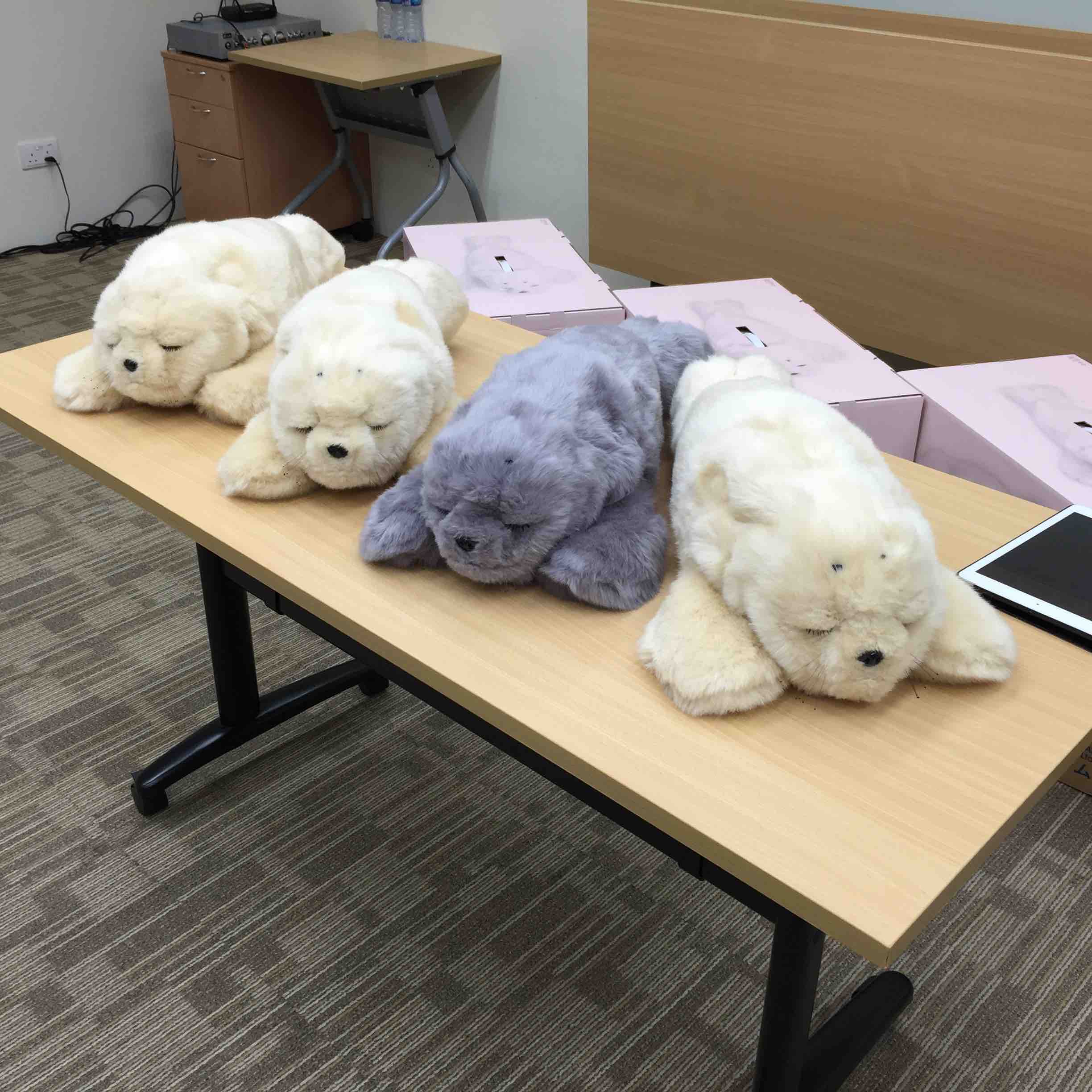
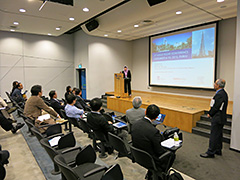
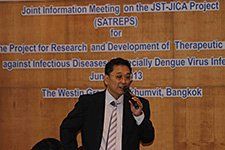
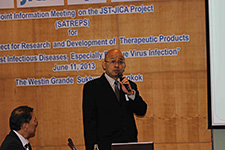
![]()
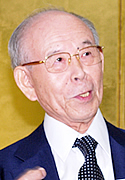
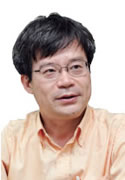
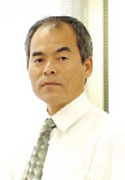
![]()
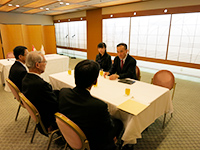
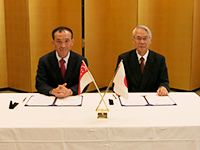
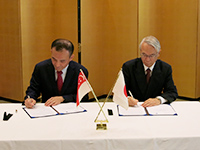
![]()
![]()
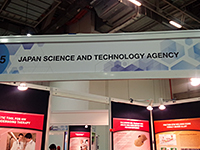
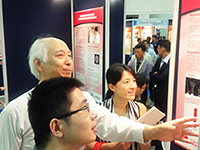
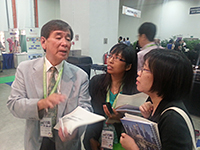
![]()
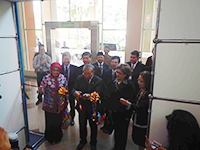
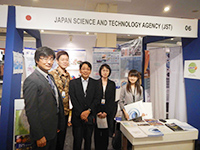
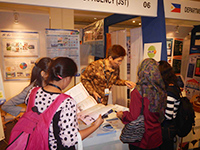
![]()
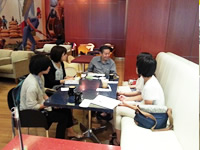
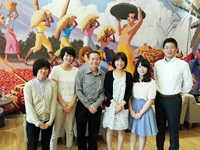
![]()
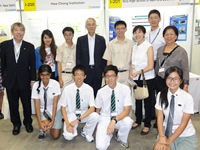
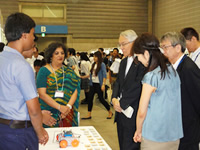
![]()
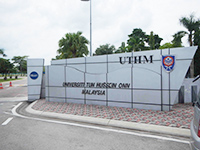
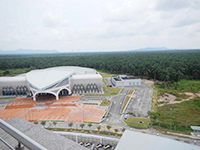
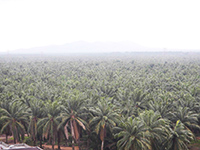
![]()
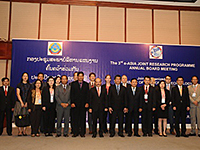
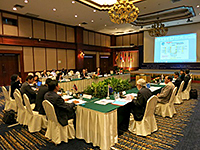
![]()

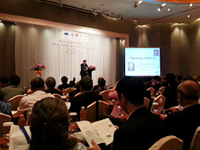
![]()
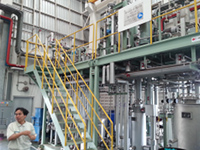
![]()
![]()
![]()
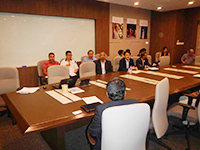
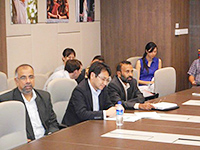
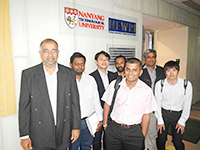
![]()
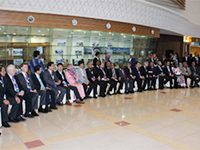
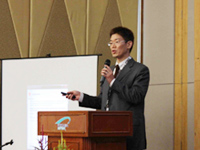
![]()
![]()